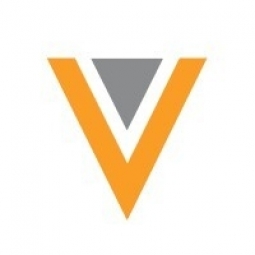Applicable Industries
- Cement
- Education
Use Cases
- Personnel Tracking & Monitoring
- Time Sensitive Networking
Services
- System Integration
- Training
About The Customer
Exact Sciences is a biotech company based in Madison, Wisconsin, United States. The company specializes in molecular diagnostics, providing non-invasive, patient-friendly screening technologies for the early detection of cancer. The company's mission is to combine science and technology to create revolutionary products that can help detect cancer early and in a more accurate manner. The company was facing challenges with its medical, legal, and regulatory (MLR) review process, which was inefficient and lacked a unified technology solution. The company sought to streamline this process and implement a scalable technology solution.
The Challenge
Exact Sciences, a molecular diagnostics company, was grappling with an inefficient medical, legal, and regulatory (MLR) review process. The company was using different technologies for MLR review across its various business units, with no enterprise solution or integrations in place. This lack of uniformity and integration was causing inefficiencies and slowing down the review and approval process. The company also lacked dedicated roles for managing the MLR review process, with senior vice presidents often taking on the task. The challenge was to streamline and optimize the MLR review process, implement a scalable technology solution, and change the company culture around MLR.
The Solution
Chris Larsen, the director of Commercial Services at Exact Sciences, took on the task of improving the MLR review process. She started by assessing the existing process, from who was involved to how content moved from system to system. After considering various vendors, she chose Veeva Vault PromoMats as the technology solution for its ability to meet all requirements and scale with the business. The implementation was rolled out in stages, with domestic units going live before international ones. This phased approach allowed for adjustments and improvements to be made based on feedback and observations. Alongside the technology implementation, Larsen also made significant role shifts. She introduced dedicated roles for managing the MLR review process and getting content into Vault PromoMats. She also encouraged senior leaders to delegate MLR review tasks to their teams, thereby broadening the review process.
Operational Impact

Case Study missing?
Start adding your own!
Register with your work email and create a new case study profile for your business.
Related Case Studies.

Case Study
System 800xA at Indian Cement Plants
Chettinad Cement recognized that further efficiencies could be achieved in its cement manufacturing process. It looked to investing in comprehensive operational and control technologies to manage and derive productivity and energy efficiency gains from the assets on Line 2, their second plant in India.

Case Study
Revolutionizing Medical Training in India: GSL Smart Lab and the LAP Mentor
The GSL SMART Lab, a collective effort of the GSL College of Medicine and the GSL College of Nursing and Health Science, was facing a challenge in providing superior training to healthcare professionals. As clinical medicine was becoming more focused on patient safety and quality of care, the need for medical simulation to bridge the educational gap between the classroom and the clinical environment was becoming increasingly apparent. Dr. Sandeep Ganni, the director of the GSL SMART Lab, envisioned a world-class surgical and medical training center where physicians and healthcare professionals could learn skills through simulation training. He was looking for different simulators for different specialties to provide both basic and advanced simulation training. For laparoscopic surgery, he was interested in a high fidelity simulator that could provide basic surgical and suturing skills training for international accreditation as well as specific hands-on training in complex laparoscopic procedures for practicing physicians in India.

Case Study
IoT platform Enables Safety Solutions for U.S. School Districts
Designed to alert drivers when schoolchildren are present, especially in low-visibility conditions, school-zone flasher signals are typically updated manually at each school. The switching is based on the school calendar and manually changed when an unexpected early dismissal occurs, as in the case of a weather-event altering the normal schedule. The process to reprogram the flashers requires a significant effort by school district personnel to implement due to the large number of warning flashers installed across an entire school district.

Case Study
Digital Transformation of Atlanta Grout & Tile: An IoT Case Study
Atlanta Grout & Tile, a Tile, Stone & Grout restoration company based in Woodstock, Georgia, was facing challenges with its traditional business model. Despite steady growth over the years, the company was falling behind the web revolution and missing out on the opportunity to tap into a new consumer base. They were using independent software from different vendors for each of their department information and workforce management. This resulted in a lot of manual work on excel and the need to export/import data between different systems. This not only increased overhead costs but also slowed down their response to clients. The company also had to prepare numerous reports manually and lacked access to customer trends for effective business decision-making.

Case Study
Implementing Robotic Surgery Training Simulator for Enhanced Surgical Proficiency
Fundacio Puigvert, a leading European medical center specializing in Urology, Nephrology, and Andrology, faced a significant challenge in training its surgical residents. The institution recognized the need for a more standardized and comprehensive training curriculum, particularly in the area of robotic surgery. The challenge was underscored by two independent studies showing that less than 5% of residents in Italian and German residency programs could perform major or complex procedures by the end of their residency. The institution sought to establish a virtual reality simulation lab that would include endourological, laparoscopic, and robotic platforms. However, they needed a simulator that could replicate both the hardware and software of the robotic Da Vinci console used in the operating room, without being connected to the actual physical console. They also required a system that could provide both basic and advanced simulation training, and a metrics system to assess the proficiency of the trainees before they performed surgical procedures in the operating theater.








